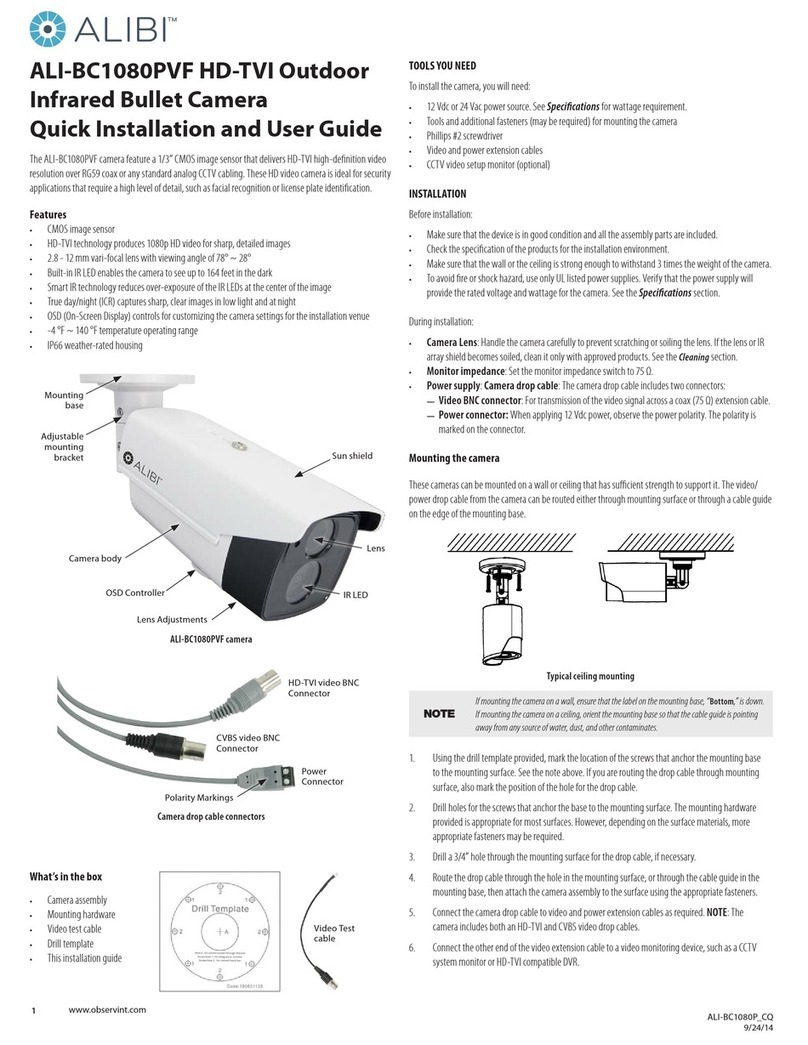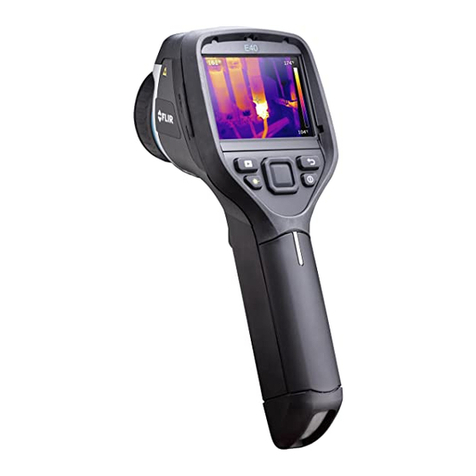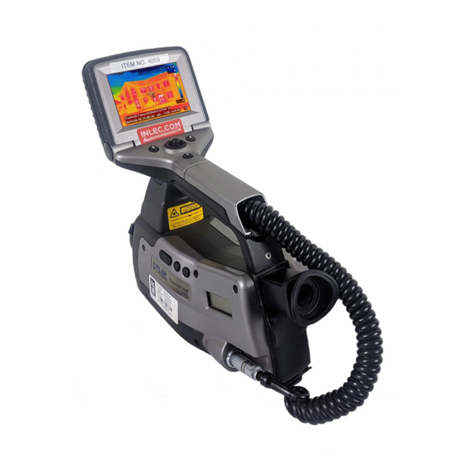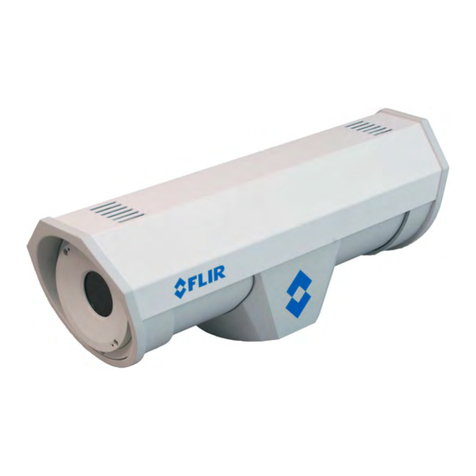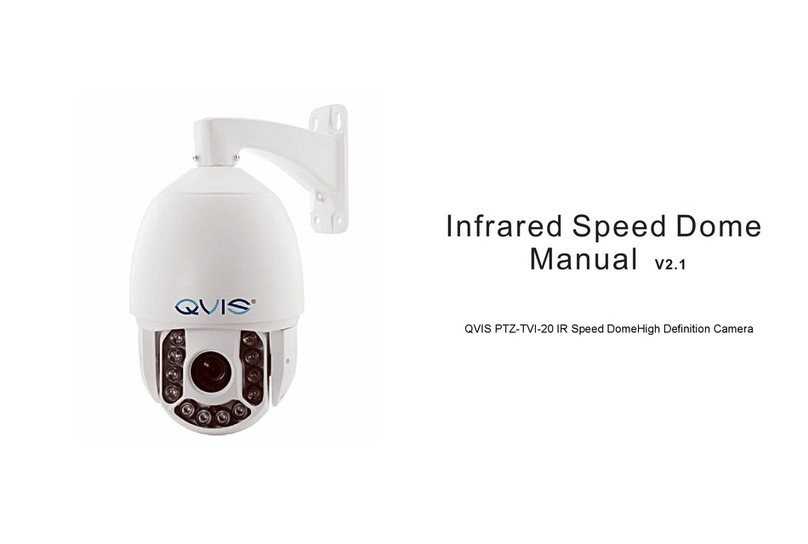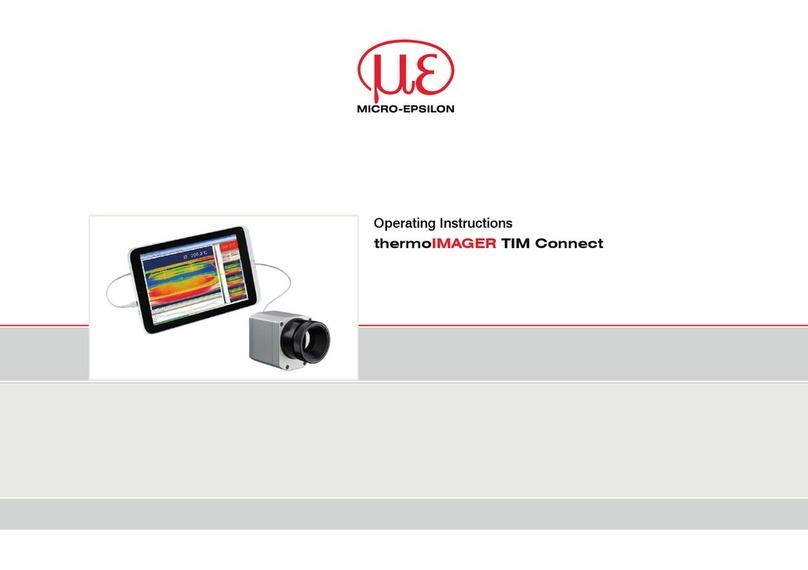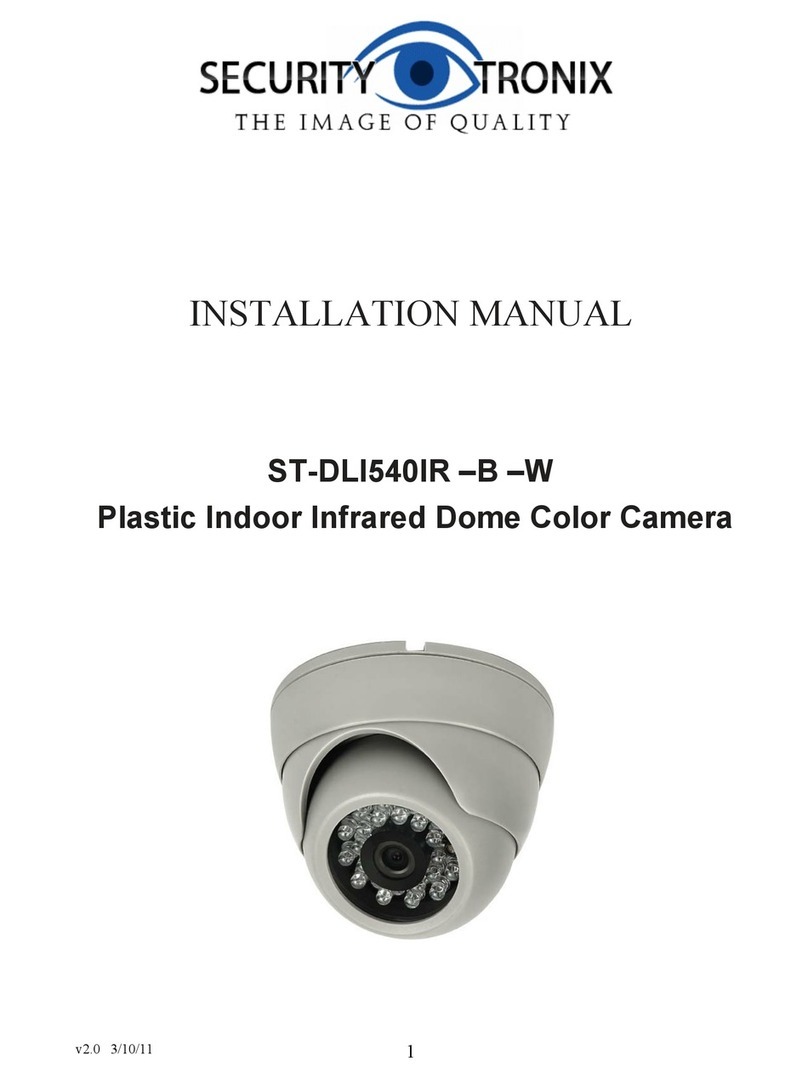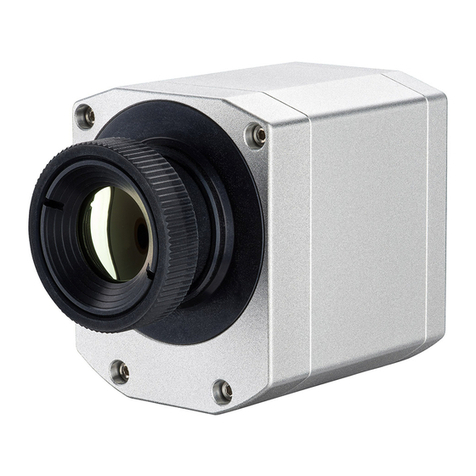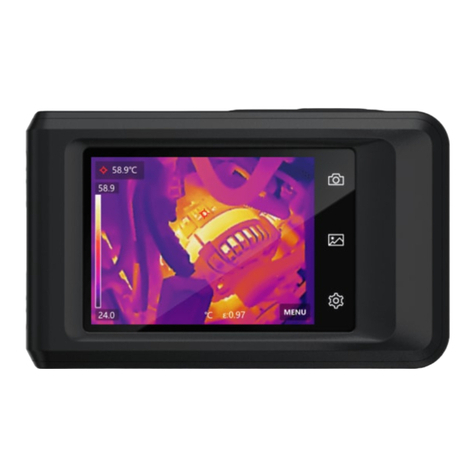GJD CS100-ATEX User manual

PULSE MODULATED ACTIVE INFRA-RED BEAM
FOR HAZARDOUS AREAS ZONE 1 OR ZONE 2
The GS100 IR beam set carries ATEX certication for use within the
petrochemical industry, or other similar industries where an explosion-proof,
ameproof, weather, or dust proof housing is required.
The electronic modules and associated housings have been designed &
assembled in accordance with ATEX DIRECTIVE 2014/34/EU.
Product Description Flameproof IR Transmitter & IR
Receiver Enclosure
II 2 G Ex d op is IIC T6 Gb -20 °C ≤ Ta ≤
+40 °C, IP66
II 2 D Ex tb op is IIIC T80°C Db IP66
Type EMH29
CERTIFICATION AND CONFORMITY
EN 60079-0:2012/A11:2013, EN 60079-1:2014, EN 60079-31:2014,
EN62368-1:2014
Suitable for:
European Classication
Group II Category 2 G Zone 1 & Zone 2 Hazardous areas
North American Classication
Class I, Division 1 & Class I, Division 2
European Classication
Group II Category 2 D Zone 21 & Zone 22 Hazardous areas
North American Classication
Class II, Division 1 & Class II, Division 2
In accordance with EC type examination certicate No. TRAC13ATEX0054X,
a review of EN 60079-0:2012/A11:2013, EN 60079-1:2014, EN 60079
31:2014 and Manufacturing Specication and Parts List-06109 EMH29-
06108.
This product is a component system and is intended for inclusion within
other equipment tted by professional installers only.
The unit must not be operated as stand alone equipment.
Where applicable, compliance with the EMC directive or Machinery Directive
is the responsibility of the installer.
GS100-ATEX
Hazardous Areas Infra-Red Beam
GENERAL
The GS100 beam set is a detection device only, and is designed to be used
in association with alarm annunciation equipment, or other devices that
provide a means of monitoring the GS100 voltage free relay alarm output
(i.e. CCTV / NVR integrations, etc).
The beam set comprises of two parts, an infra-red beam transmitter, and
an infra-red beam receiver. Both modules are mounted within a ameproof
(EExd) enclosure c/w gasket, chromate primed and polyester coated white
nish.
A heat strengthened plate glass aperture is incorporated in which the
infra-red beam is projected (via TX optics) and monitored (via RX optics). An
interruption in the ‘aligned’ beams path, is designed to provide a change of
relay state at the receiver (N/C & N/O alarm relay O/P).
A heater element can optionally be provided in both the transmitter (TX) and
the receiver (RX), to help combat the build up of condensation.
It is however normal practice to t such a device to the RX housing only,
as an attempt to tamper with the TX device will automatically generate an
output at its associated receiver. i.e. if the TX optics are moved, supply
interrupted, or device is low in voltage, the low energy projected infra-red
beam, or no projected beam present, will be detected by its associated
receiver.
As the beam sets use an infra-red light source that is invisible to the human
naked eye, a beam alignment voltage output is provided for this process, via
a terminal (align. O/P), or test pin.
Additionally, an optical alignment module is provided, that may be used
(placed on) the TX and RX optical assemblies to aid initial alignment, prior to
nal alignment via the voltage O/P.
The voltage O/P is designed to be used with a standard voltmeter
(0 – 10VDC), or for easy single man alignment operation, via an optional
‘Mini-strobe’ beam alignment tool.
The GS100 incorporates both high security ‘Asynchronous’, and
‘Synchronous’ beam set synchronisation, allowing many sets of beams to
be installed on the same site, or indeed stacked above each other (greater
detection), without ‘cross interference’.
The use of the synchronisation facility when installing only one set, or
several sets in different locations of a site is recommended (although not
essential). Doing so will ensure that the receiver (RX) circuitry ignores other
infra-red light sources that may unknowingly be present and falling directly
on the RX optical axis (invisible to see).
Synchronisation monitoring is incorporated when the interconnections are
made, refer to technical specication.
It is recommended that the 12VDC supply have a oating output to accept
the negative earth, and that all cables should be screened throughout their
entirety.

SPECIFICATIONS
Note: Housing manufacturer installation & maintenance instructions can be
found within the housing and should be observed prior to xing.
ADDITIONAL FEATURES
The equipment utilises pulse modulation.
For high security and avoidance of cross talk between beam sets, the
system can be synchronised by means of an ‘asynchronous’ connection.
For lower security and avoidance of cross talk between beam sets, the
system can be synchronised by means of a ‘synchronous’ connection.
The GS100 circuitry incorporates ‘Sync. Line’ monitoring, providing a change
of relay state (alarm O/P) at the receiver (RX), if the synchronisation cable is
maliciously or accidentally cut, or short circuited.
The product is guaranteed against faulty workmanship for a period of 2 years
from date of despatch.
Our progressive design policy reserves us the right to modify our
products, data and specication, without prior notice.
The infra-red beam is designed as a detection device only and its
output used for connection to an alarm control / monitoring panel. As
such we will not accept responsibility for any theft / damage.
INSTALLATION GUIDANCE NOTES
Please additionally refer to any supporting instructions that may be provided
by the housing manufacturer and may be present within the TX or RX
housing.
Using the M6 mounting holes at the rear of both TX and RX housings, the
units should be mounted on a rigid, vibration free at surface. Depending
upon the structure being xed to, it may be necessary to employ some form
of mounting plate, as the housings must not in any instances be drilled.
The transmitter (TX) & receiver (RX) unit should be mounted so as to face
each other squarely, and at the same height, assuming that the ground is
level.
The optical heads of the TX & RX can be adjusted (+/- 15deg. approx.),
however the housing aperture restricts movement and should be used as
a means of overcoming unavoidable inaccuracies that may occur during
installation.
Further adjustment is catered for in the TX & RX mounting plates. Two
sets of mounting holes are provided (one set above the other), allowing the
electronics and associated optics positions within the housings to be shifted
in the vertical plane.
Where greater angles are required, then this should be dealt with using
suitable adjustable mounting plates.
Cable type, mechanical protection, and entry glands should be provided by
others and suitable for the type of installation.
When choosing the appropriate cable for the installation, consideration
needs to be paid to the TX & RX terminal cable size (refer to tech. spec.)
and in particular to the size of conductor used for the 12V DC supply voltage
over the length of the cable run (to avoid voltage drop).
Where it is decided to use optional heater elements to combat condensation
build up on the glass apertures (external exposed locations), then it is good
practice to use a separate pair of conductors for the supply voltage to the
heater terminal connections.
The TX & RX units should be connected in accordance with the wiring
diagrams provided, with connection made to the heaters and tamper
switches where tted.
A separate terminal block is provided on the underside of each heater
module, and requires a 12V DC supply voltage for element operation
(refer to tech. spec. for current of each heater). For ease of installation,
the termination block is removable (pull downward off of board connection
mounting pins). Note: cable connections are to the outer two terminals only,
the centre one not being used.
TRANSMITTER
DETECTION TYPE Quad
PROTECTION DISTANCE 10m – 100m / with 75% attenuation
INPUT VOLTAGE Nominally 12Vd.c Min 10.5Vd.c
Max. 15Vd.c (15mA)
EFFECTIVE TRANSMITTED BEAM
ANGLE
6° approximately
TAMPER OUTPUT 1 x voltage free N/C contact: Max.
rating 24V 1A 30VA
HEATER CURRENT 125mA
IR WAVELENGTH 880nm
DIMENSIONS 160 x 146 x 137mm
TEMPERATURE RANGE -20 °C +40 °C
WEATHER PROTECTION IP66
RECEIVER
DETECTION TYPE Quad
INPUT VOLTAGE Nominally 12Vd.c Min 10.5Vd.c
Max. 15Vd.c (40mA)
ALARM OUTPUT 1 x voltage free change over
contact: Max. rating 24V 1A 30VA
RESPONSE TIME > 20ms < 40ms
DWELL TIME 800ms
HORIZONTAL ADJUSTMENT +/- 15 degrees
VERTICAL ADJUSTMENT +/- 15 degrees
TAMPER OUTPUT 1 x voltage free N/C contact: Max.
rating 24V 1A 30VA
HEATER CURRENT 125mA
DIMENSIONS 160 x 146 x 137mm
SYNCHRONISATION MODES Synchronous connection &
Asynchronous connection in
both modes Synchronising Link
monitoring is incorporated as
standard
TEMPERATURE RANGE -20 °C +40 °C
WEATHER PROTECTION IP66
TW-MM100 (Transmitter) USER NOTICE:
When unpacked or tted within housing, never leave the Transmitter optics
facing towards direct sunlight without being covered by the black lter
material.
TW-MM100 (Receiver) USER NOTICE:
When unpacked or tted within housing, never leave the Receiver optics
facing towards direct sunlight without being covered by the black lter
material.
12v DC
- +
1 2
12v DC
- +
1 2
O/P
Sync
3
I/P
Sync
3
O/P
Sync
4
O/P
Sig
4
I/P
Ext
5
O/P
Align
5
Spare
6
RELAY OPs
N/O - C - N/C
6 7 8

A separate terminal block is provided via a ‘ying lead’ from the tamper
switch (housing lid removal detection device). As provided, the connections
to the changeover switch is of a solder made to the tags, suitable for the
security industry i.e. when the lid is secured a closed circuit is present at
the terminal block, going open circuit when the lid is removed. Should this
operation require to be reversed, then an alternative solder tag is provided
on the switch.
Note: the tamper switch operation should be tested prior to nal
commissioning, and the switch adjusted as necessary to ensure false alarm
free operation. Adjustment can be made by applying gentle pressure to the
arm of the switch just above the switch contact point, and bending slightly
outwards as may be necessary.
To obtain the benets of beam synchronisation as described previously, the
facility will only be in full operation when a hard-wired cable connection is
made between each beam set TX and its associated RX unit.
If the TX and RX of each set are powered from the same 12V DC power
supply, then only a single core cable / conductor is required between
terminal 3 (Sync. O/P) of the Transmitter (TX) and terminal 3 (Sync. I/P) of
its associated Receiver (RX).
Where the TX & RX units are powered via separate power supply units, it
is necessary to common the negative supply line of the PSU’s, or install
an additional core cable / conductor between the TX terminal 1 and its
associated RX terminal 1 (negative supply of TX & RX units).
If on a single beam set installation the synchronisation system is not desired,
then no interconnect between the TX and RX should be made, other than
possibly the 12VDC supply (TX & RX Term. 1 - & 2 +).
Note: In an unsynchronised system, the beam sets will operate even with
the TX and RX units powered from separate 12V DC power supply units
(PSU’s), and the 230 / 110 V input to the PSU’s powered via different mains
phases.
The ‘synchronous’ type synchronisation system is not covered within the
instructions. It is to be used under guidance from our tech. dept, who will
be pleased to discuss the connection requirements if in our view we deem
it applicable for the type of installation. Terminals applicable are:- TX term.
4 & 5 and RX term. 4. These terminals should not be used for any other
connections.
OPTICAL SIGHTING MODULE
The Optical Alignment module is designed to be placed upon the top of both
the transmitter (TX) & receiver (RX) GS100 ‘Optical Head’ to aid the process
of ‘initial alignment’.
optical sighting module (SAA1-16) optical head of TX/RX Unit
sighting window (LEFT) sighting window (RIGHT)
FINAL ALIGNMENT
This process aligns the beam path between the TX & RX for optimum
performance in all weather conditions.
It is simplied by the use of the mini strobe alignment tool (optional).
However, where not available the use of a standard voltmeter with 0 –
10VDC range is adequate in most instances.
Unlike the single man operation with the mini strobe, unless a drum of two-
core cable is available to temporarily run above ground between the TX &
RX units, nal alignment will require a two-man operation.
Where a voltmeter and a drum of cable is available, the alignment voltage
information that is only available at the receiver (RX) unit, can now be
observed by the voltmeter at the transmitter unit, via connection to the temp.
run cable, that in turn is to be connected to the RX voltage alignment O/P. In
this manner the process can be carried out by a single man operation.
For alignment using the ‘Mini Strobe’ refer to accompanying instructions.
Set the voltmeter, to 10V DC range and connect negative probe to terminal
1 on the receiver (RX) unit (negative supply). Connect the positive probe to
terminal 5 on the receiver (RX) unit (Align O/P).
In addition to these terminals, alignment information is mimicked via the test
pins to the right of the termination block, and identied by ‘ALIGN + / 0v’.
If initial alignment has been carried out, the alarm LED (far right of RX
termination block) may be extinguished, and / or an alignment O/P voltage
may be present on the alignment O/P terminals. Even at this point, the beam
sets should be aligned for optimum performance.
With the meter connected, both the TX & RX optical heads must be adjusted
in both ‘pan’ & ‘tilt’ directions of movement, to achieve maximum alignment
voltage.
The actual alignment voltage achieved will depend on the distance
between the TX and RX unit, and as to whether the beam sets have been
synchronised via an interconnection cable.
For non- synchronised systems the maximum alignment voltage achievable
is generally 5 - 6V DC, whilst with a synchronised system, the voltage is
approximately halved to 2.5 – 3.0V DC max.
The beam sets are best aligned methodically, starting with trying to achieve
some alignment voltage whilst adjusting the receiver optics rstly in the pan
mode, and then in the tilt mode.
Repeat this procedure with the transmitter (TX) optics, until optimum
voltage O/P is achieved, and then back to the RX optics to see if any further
improvement can be made.
It is critical that alignment of the optical heads are carried out at each end
of the detection zone, i.e. both TX & RX optical heads are adjusted, and not
just the RX optical heads where the alignment voltage is made available.
The most critical optical head is that of the transmitter, as unless the
projected cone of energy is adjusted to fall on the receiver optics, no
adjustment at the receiver optics will produce an alignment O/P (receiver will
never pick up its associated transmitter signal).
FINAL TEST
An optional 70% or 90% attenuation lter is available, and can be inserted
in the beam path, in font of both the TX and RX optics. The lter will have
the effect of attenuating the beams signal strength by 70/90%, simulating the
effect of adverse weather conditions.
With the introduction of the lter into the correctly aligned beam set, the
receiver (RX) should not provide an alarm O/P. If an alarm is generated then
the alignment procedure should be repeated.

Checking that a clear line of sight can be obtained, between the TX & RX
units and that the beam path is not ‘bouncing off’ any adjacent/reective
surfaces.
Once the optimum alignment voltage has been achieved, the operation of
the units should be tested at intervals along the detection zone length.
As the beam path is interrupted / blocked, the associated RX should trip to
an alarm condition (relay change state), and the alarm LED should indicate
accordingly.
BASIC TROUBLE SHOOTING
At certain points along the beam path, the beam can be blocked/interrupted
without generating an alarm condition.
Check for a bounced beam path from an adjacent object / reective surfaces
and realign.
Receiver is in an alarm condition and ‘Alarm LED’ is permanently ‘ON’
although alignment voltage is good.
Check position of receiver (RX) switch ‘S1’. For a synchronised system the
switch should be ‘ON’, for an unsynchronised system the switch should be
‘OFF’.
Check synchronisation cable /connections (if applicable).
No alignment voltage can be obtained at the receiver (RX), LED is ‘ON’
Check that the transmitter is switched ‘on’ via switch ‘S1’ to right of TX
terminal block.
Check supply voltage at TX and RX terminal 1 & 2 are within tolerances of
spec.
Check alignment operation and if still no alignment voltage, remove TX and
introduce in front of RX to test beam set operation (a battery may be used to
temp. power the TX).
Check operational distance is within specication and that glass aperture in
housing is clean.

GS100 TX & RX Assembly (Out of housing)
GS100 Transmitter (TX) PCB Termination Block
GS100 Receiver (RX) PCB Termination Block
0 0 0 0
optical alignment module
optical head assembly module
mounting plate
alignment adjustment ‘tilt’ axis
alignment adjustment
heater element (optional)
TX & RX PCB termination block TX & RX switch / LED (refer to
termination layout below)
optional heater termination block
tamper termination block
housing mounting holes (2 x positions)
tamper switch/bracket (optional)
1 2 3 4 5 6TX
0
12V DC O/P O/P I/P -----
- + Sync Sync Ext Spare
1 2 3 4 5 6
0V Test Pin
terminal block
PCB screening can
IR ON/OFF switch ‘S1’
1 2 3 4 5 6 7 8RX
0
12V DC I/P O/P O/P RELAY O/P’s
- + Sync Sig Align N/O - C - N/C
1 2 3 4 5 6 7 8
terminal block
sync.ON/OFF switch ‘S1’
PCB screening can
alarm LED
align. test pins
Table of contents
